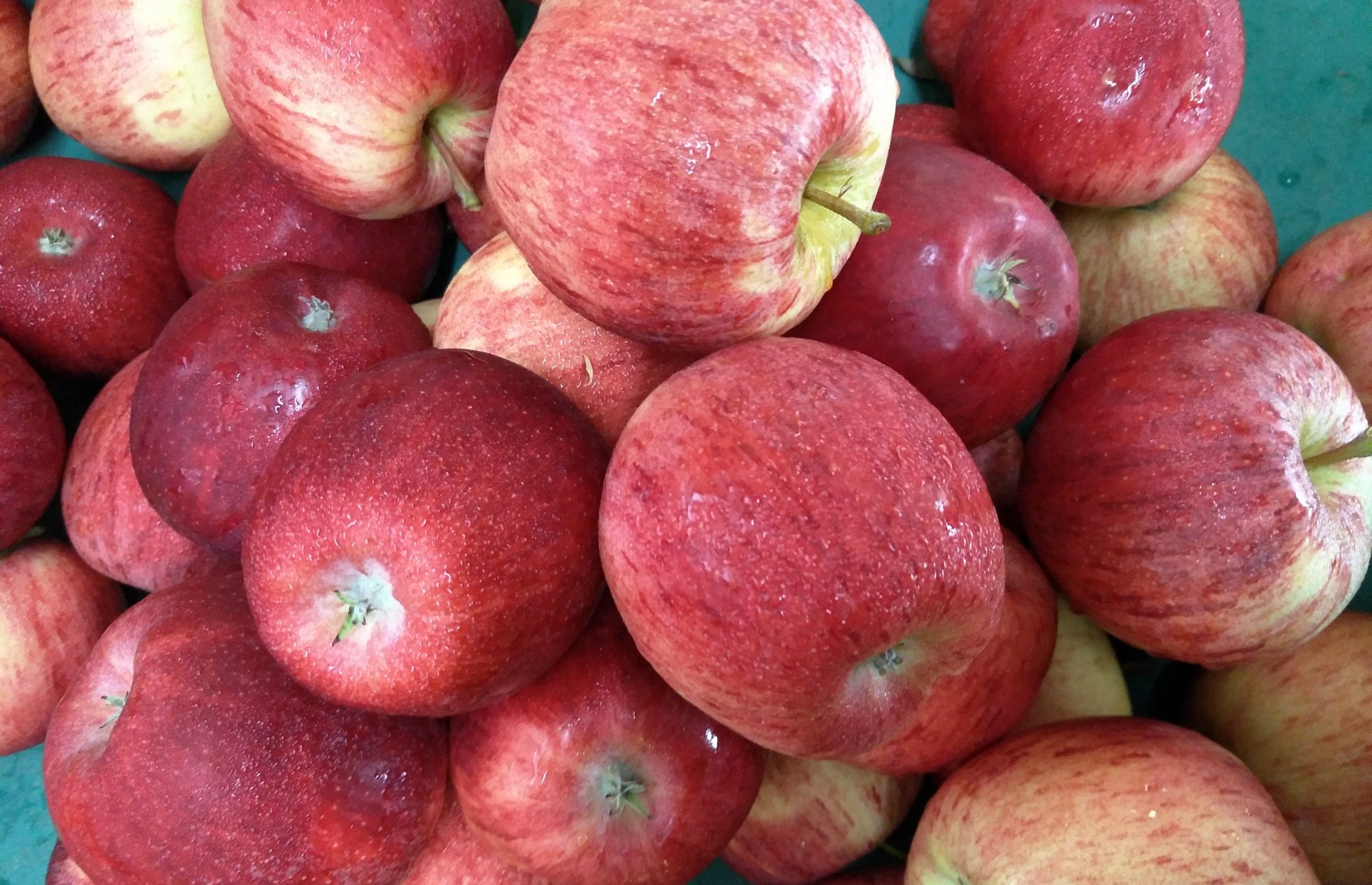
Pialligo is an important part of Canberra’s history. Sandwiched between the Molonglo River and Canberra International Airport, it is the original market garden for the region, and has been regularly farmed since the 1820s. Slightly marooned on the other side of Pialligo Avenue is a small pocket of land that contains an oval and buildings of historical interest that currently house the Richmond Fellowship.
I am a regular visitor to Pialligo for lots of good reasons: locally grown produce; wine; coffee; lovely plants and pots; and crunchy, straight-off-the-tree apples in autumn. I have always taken Pialligo’s somewhat ramshackle but rustic presentation for granted. It’s been like that for as long as I can remember. Indeed, there are people who emphatically rail against changing anything. For them, Pialligo sits firmly in a category that includes other locally protected species. But is change inevitable, and what will it mean for Pialligo residents and businesses?
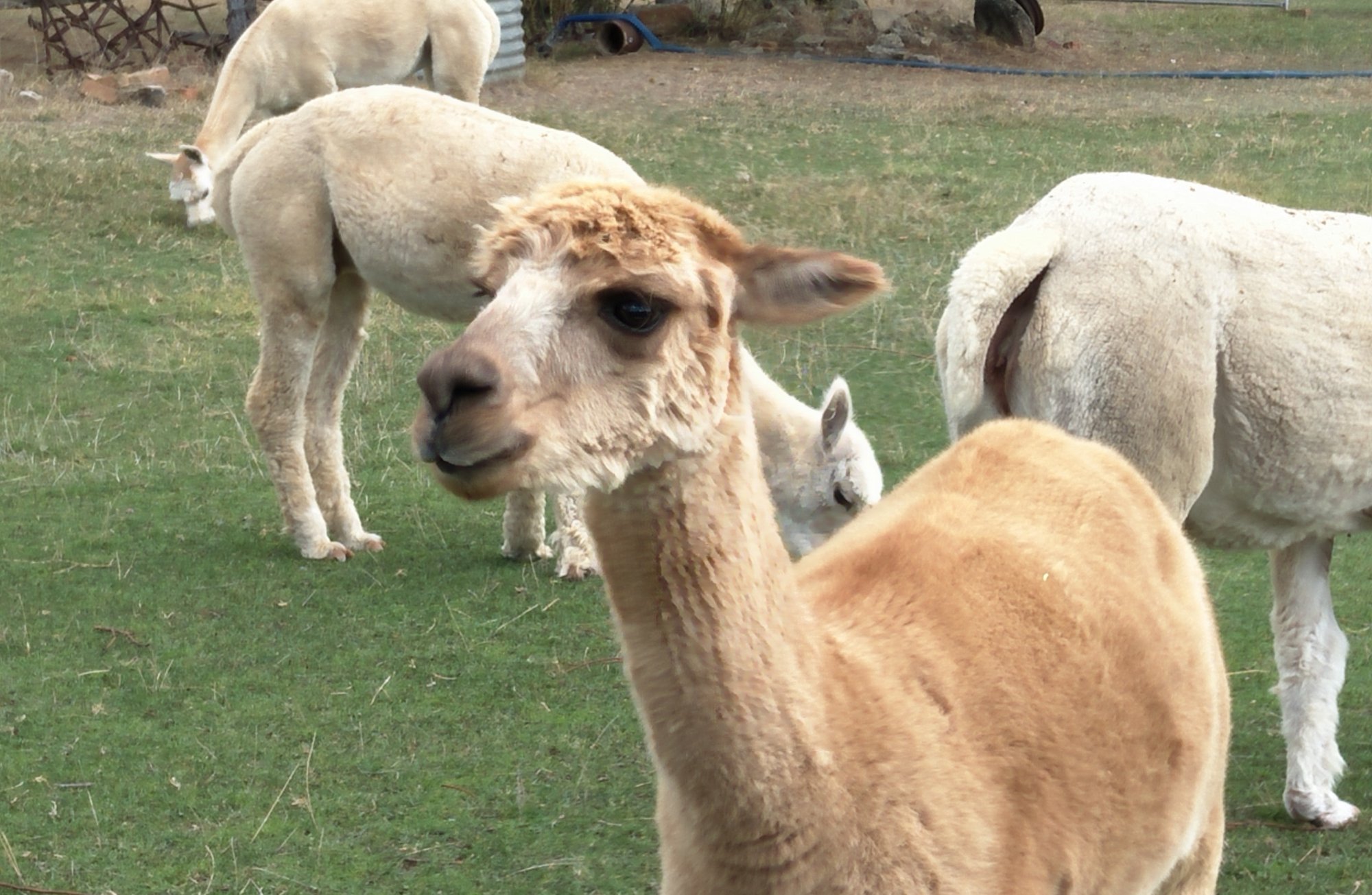
These days, Pialligo is home to a small number of residents, with 40 residential blocks of various size. Located 10 minutes from Civic, it is primarily the go-to place for anyone interested in landscaping and gardens, and of course apples in autumn. The security of the orchards is under threat for a number of reasons, including lack of commercial viability as rates and water license costs increase, and long-term orchardists finding it difficult to hand on to a family member. Pialligo is also the location of a number of much loved and well-patronised specialist nurseries, which vary from small to substantial. There are also great cafes and restaurants, cat boarding, gorgeous alpacas, and a fairly recent arrival on the regional tourism scene: the Pialligo Estate. The Estate has been designed with commercial vision: it is a multi-faceted food and wine enterprise, covering over 50 acres, and there is talk of expansion.
On recent visits, I have looked closely at Pialligo and spoken to people who have lived there for many years. I heard and noted comments about the state of the narrow and crowded roads, the chaotic parking, and the absence of safe access for pedestrians and the ever-increasing number of cyclists. Of concern are mothers with babies and prams who are forced to walk on the narrow road and dodge cars. Widening the sealed section of the road is problematic as it could mean resuming meterage from houses and businesses. Regulars know parking is in short supply, indeed awkward on the weekend. Some businesses rely on hazardous on-street parking. Other larger businesses have good off-street parking which they provide for customers, foregoing possible income. Beltana Road has ‘nose to kerb’ parking on the north side: the parking zone is cleared but unsealed ground which rapidly turns to gluey mud when it rains, while the south side consists of mostly uneven grass verges.
Whilst looking at the history of Pialligo, I stumbled across the Pialligo Master Plan. It was produced a few years ago as part of a flurry of ‘interest’ by the Government in some areas of Canberra that were in need of attention. Andrew Barr worked with residents and town planners to produce this Master Plan, but that was November 2013. It is an interesting document and has an ambitious vision for Pialligo.
So what was offered to the ratepayers of Pialligo in this Master Plan?
It covered issues of flooding on the north side of Beltana Road. Flooding of the roadway adjacent to the culvert, which is considered inadequate, and properties on the north side of Beltana Road is common. Pialligo Brook regularly floods and needs regular maintenance. The Master Plan identified the only greenfield land in Pialligo and came up with a plan to build a fire station for the immediate area. The residents did not want it as it took away the only open space in the area, but after consultation, an agreement was reached.
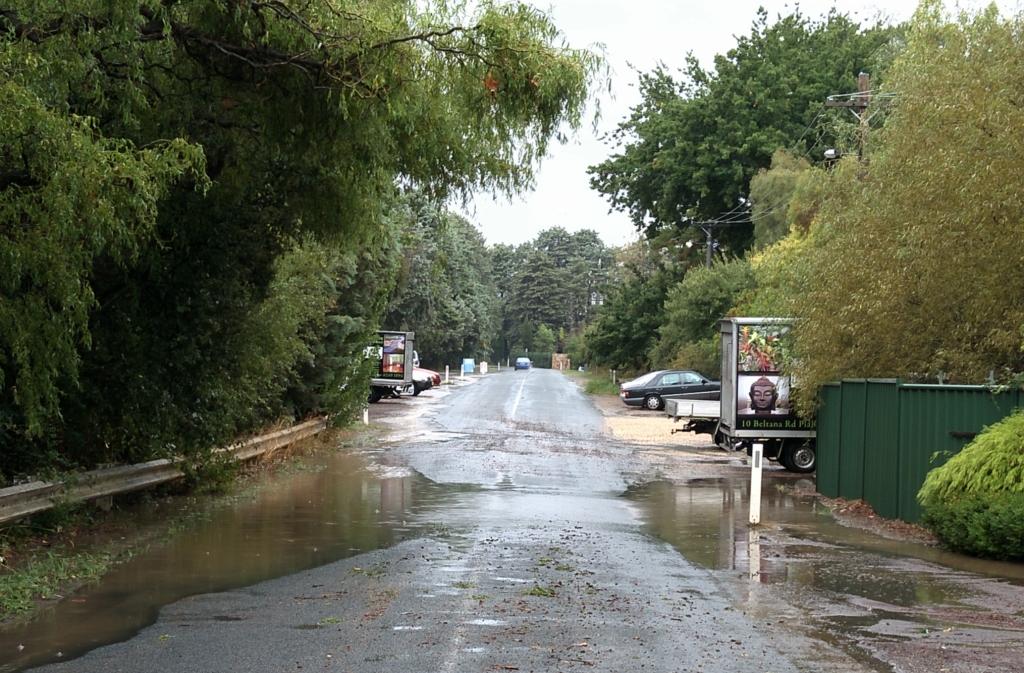
However, the fire station and the rest of the range of initiatives in the Master Plan remain unactioned. Residents confirm that meetings have been held with a number of representatives of the current Government, including RoadsACT. But the delivery of the Master Plan hasn’t happened, and the residents and commercial tenants are angry and disappointed. Anger is especially obvious when any mention is made of the increased cost of the rates on their leases, the lack of action, and some obvious inequality.
Apart from the condition of the roads, current outstanding issues include, but are not restricted to:
- The lack of mowing of the only area of public land. This is sometimes carried out by local residents. I thought every Canberra suburb featured on the ACT Government Grass Mowing schedule. It appears Pialligo isn’t on that list!
- There is no public transport, nor does it appear that the Number 11 ACTION bus that covers the new City to Airport route will incorporate Pialligo, even just a few times a day. There is a regular school bus.
- The Master Plan outlined plans for suitable signage so Pialligo can be clearly identified. The current old-fashioned ‘mission brown’ suburb sign is easy to miss.
- Access in and out of Pialligo is restricted to the lights at Pialligo Avenue and Beltana Road. At the other end of Beltana Road, there is a single pathway towards the Airport through rough bush. This uneven and unsealed goat-track leads up to the slip road off Pialligo Avenue while on the opposite side, the Airport has installed a pavement.

Other issues that remain unresolved are the number of semi-trailers (including the odd B-Double), trucks with trailers and other multiple-sized truck vehicles, as well as water carriers that drive into Pialligo. Some are delivering heavy goods, but the water carriers are accessing the town water from the on-street hydrants in Beltana Road. Even though this has been reported to TCCS, and the Residents’ Association has been assured this is not legal, I was told the practice is ongoing. As the clean drinking town water is destined for ‘dust suppression’ on nearby roadworks, this is a practice that is unacceptable to many for all sorts of reasons.
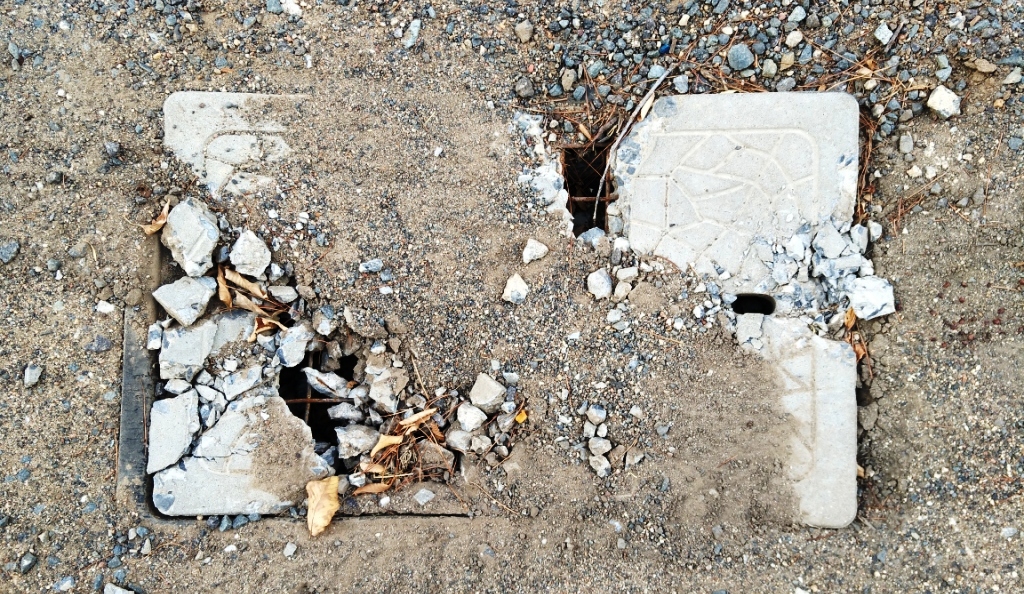
The roads were designed and built for cars of a different era, yet there are a lot of trucks coming in. They block the roads, endangering pedestrians and motorists as they attempt to turn. They are heavy, find it difficult to turn around, drive over the grass verge and Telstra boxes, and crush the sides of the poorly maintained road. RoadsACT have in the past responded to requests for repairs to the edges of the road, but this has mostly consisted of gravel being dumped as infill. Because of the volume of traffic, the gravel generally disperses within a short time. There are some possible kerbing solutions, but that discussion just hasn’t progressed.
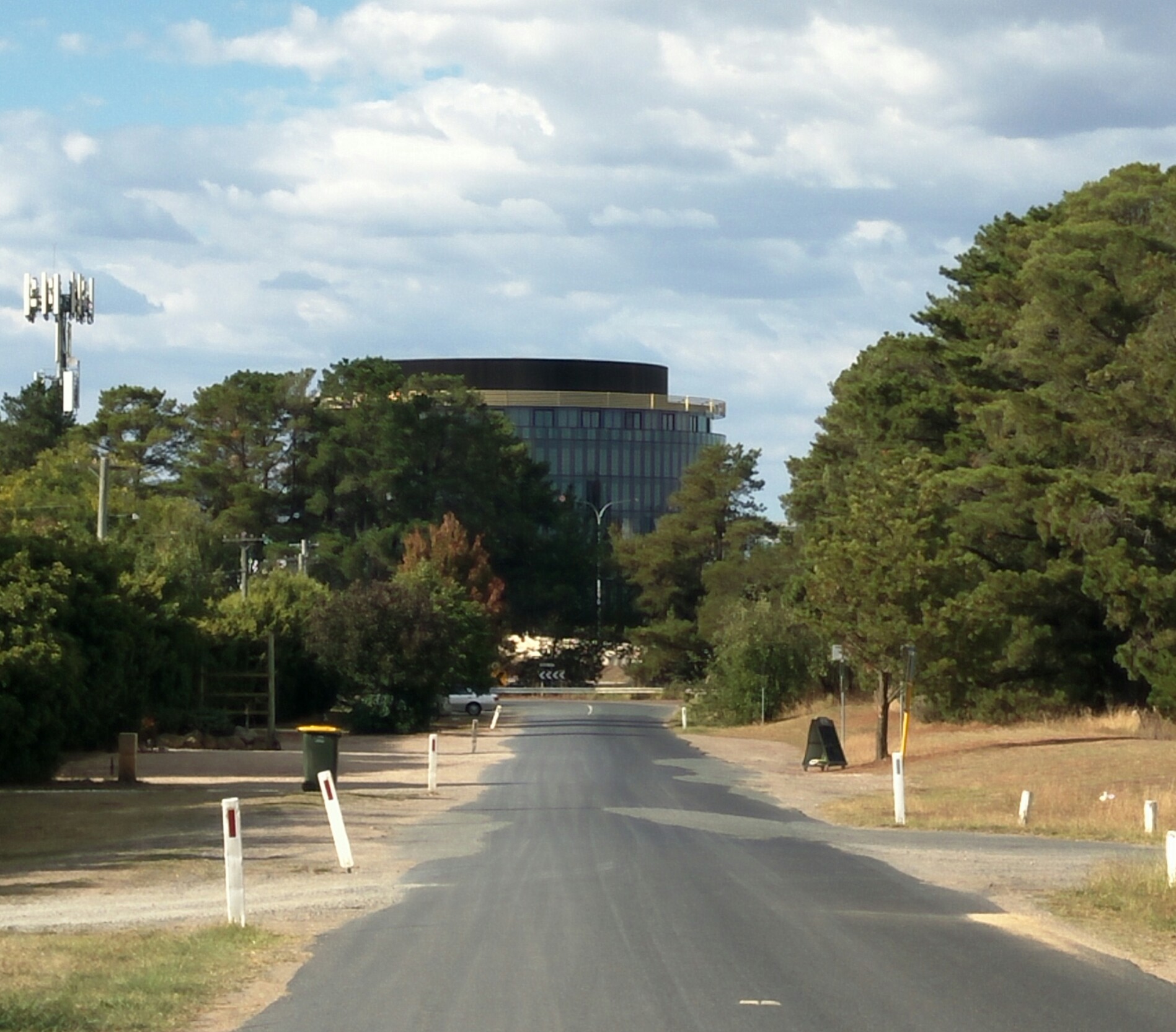
The people of Pialligo have had other disappointments. Two major public artworks were planned for Pialligo. As part of Jon Stanhope’s ‘Percent For Art’ scheme, two large kinetic sculptures by renowned Japanese sculptor Kozo Nishino were selected, commissioned, created and residents believe they were to be installed as Airport gateway sculptures at Morsehead and Pialligo Avenues. However, with delays to the roadworks, both were placed in a storage shed for some time, before being installed in the Arboretum, with no apology. Both sculptures are currently located close to the Tuggeranong Parkway but cannot be appreciated by visitors to the Arboretum because of the vast distance from the major viewpoints.
Despite the small number of residents, they are entitled to the same sort of treatment that all other ratepayers in the ACT receive: roads in reasonable repair; parking regulation; regular mowing; and restrictions on access by large B-Double and other very large trucks, and resultant hazards.
Feedback from residents after a recent meeting of the Pialligo Residents’ Association says they covered much of ‘the same old same old’ and things have reached a stalemate. There has been no shortage of meetings and there have been lots of promises, with little evidence of delivery. But as surely as the sun rises, the rates just keep going up.
So where do you think things should go next?
Captions: top, gorgeous red Gala apples, fresh from the long-established orchard of Beltana Grange, Pialligo. Image 2, friendly residents – Beltana Road, Pialligo. Image 3, Pialligo Creek regularly floods and covers Beltana Road. Image 4, pedestrian track from Beltana Road through to the Canberra International Airport. Image 5, roadside damage to communication infrastructure by heavy trucks in Beltana Road, Pialligo. Above, poor condition of Pialligo roads. Photos: Maryanna Mussared.



















